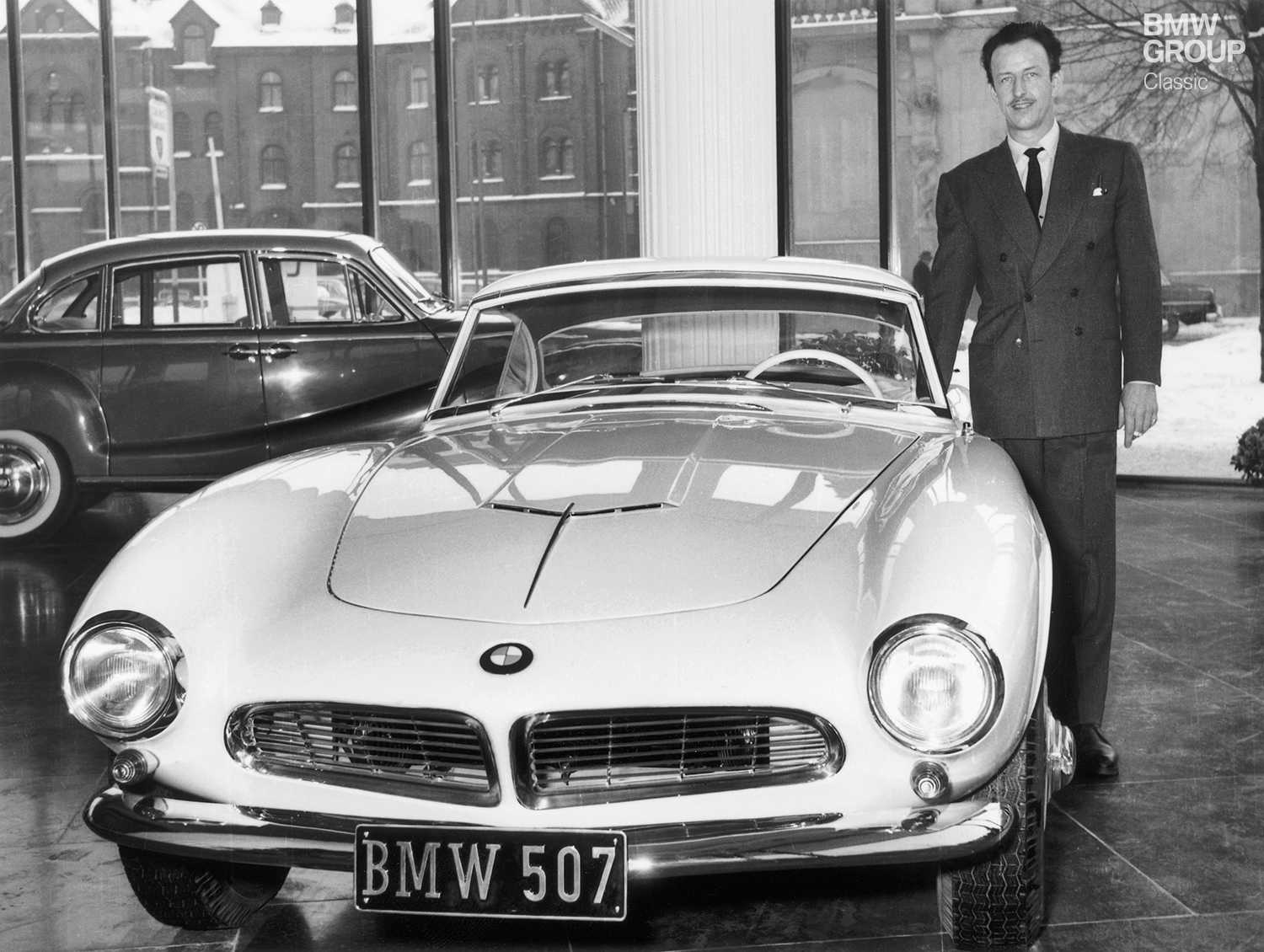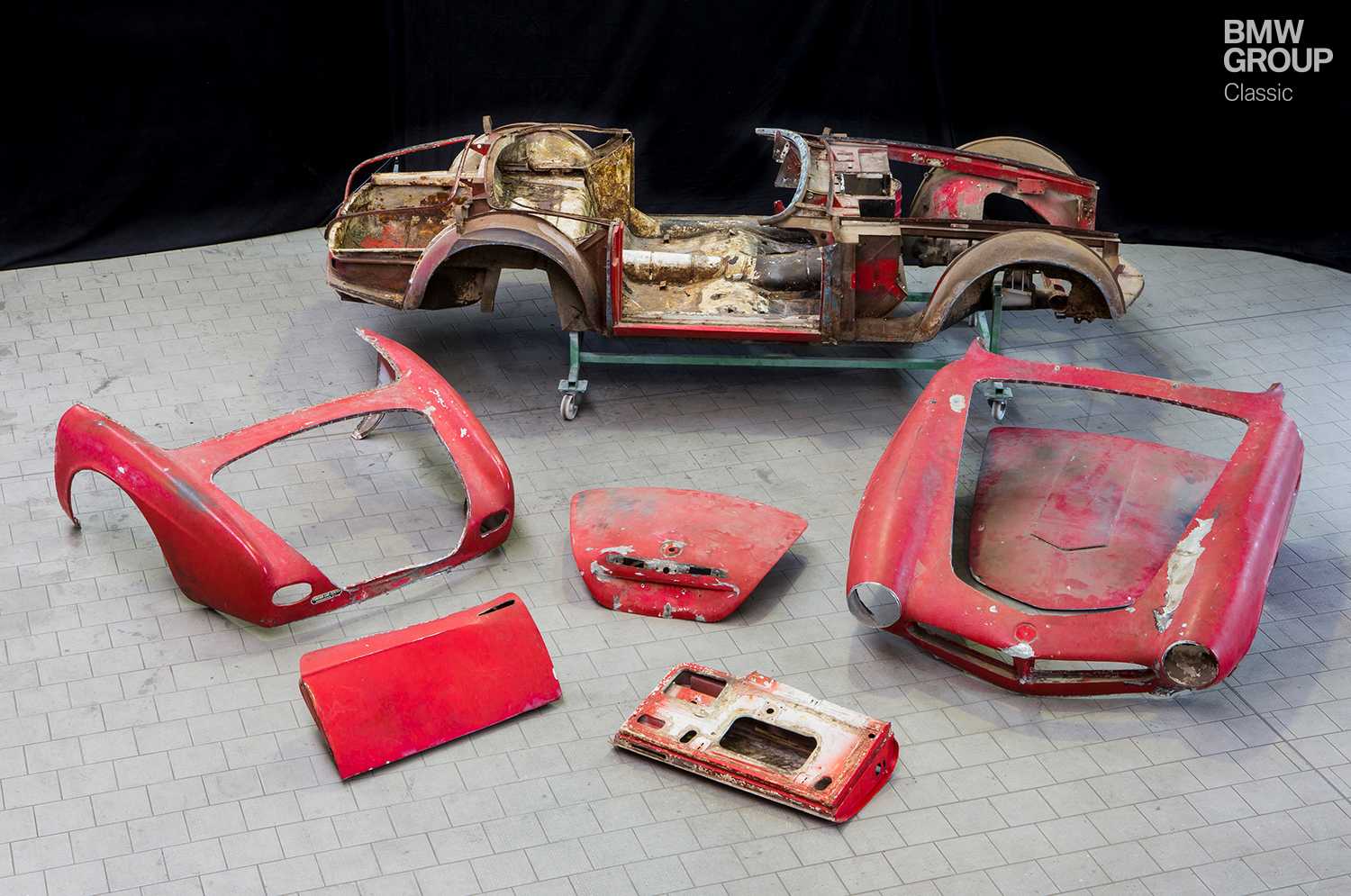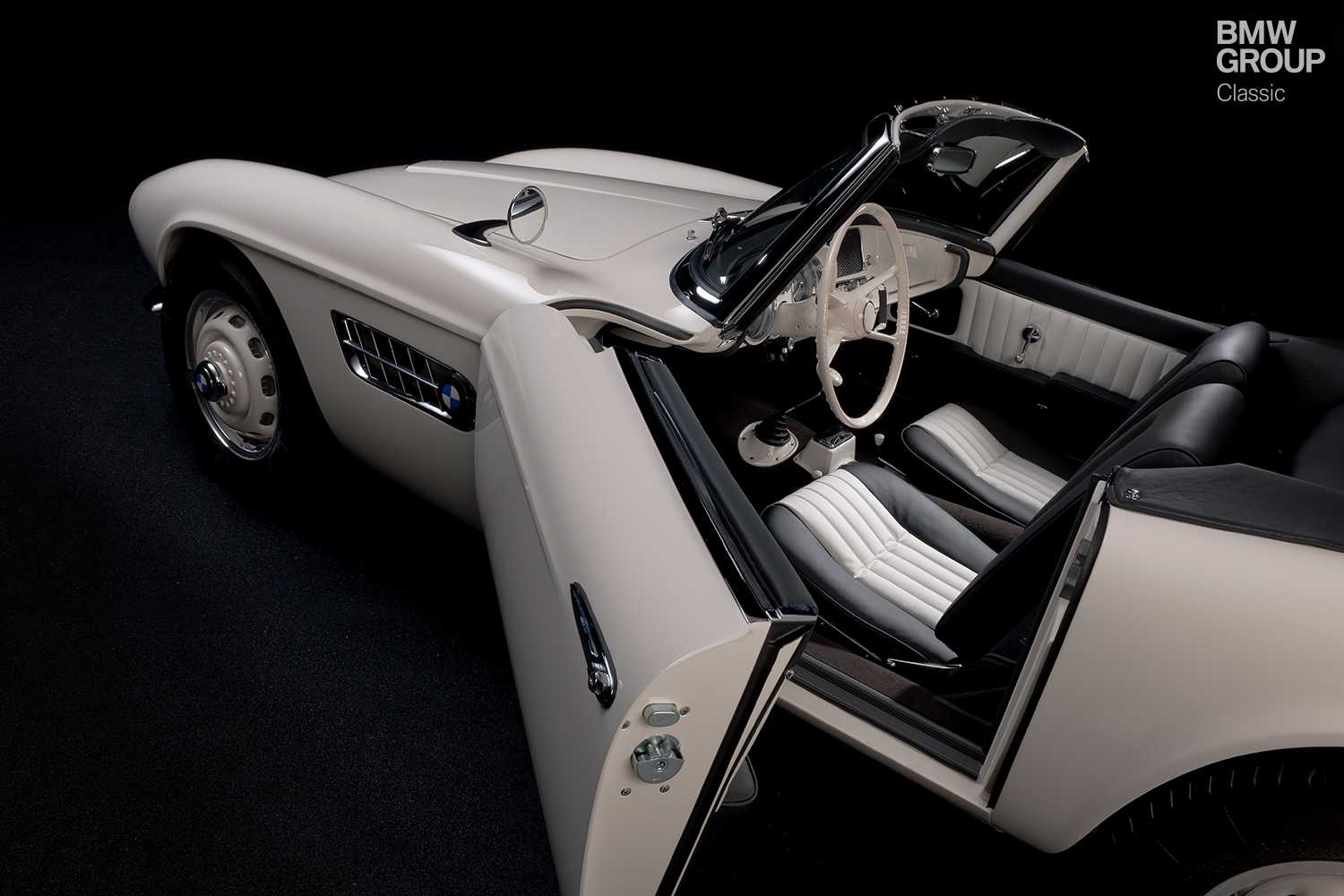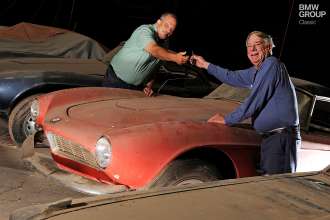What we have here is a unique car with a quite remarkable backstory: show car, racing car and rock star pleasure cruiser, bearer of eight shades of paint from white to black, and latterly a rust-bitten, battered and bruised donor of parts; the BMW 507 once driven in Germany by the King of Rock ’n’ Roll has experienced some scarcely believable ups and downs in its time. Now freshly restored, it is here in Pebble Beach to reflect on a life less ordinary.
Chapter 1: Magic in his pen.
He lived in New York and worked under Raymond Loewy, arguably America’s most famous industrial designer. And he created the 503 and 507 for BMW. Albrecht Graf Goertz’s wave of inspiration gave his fortunes and those of the Bavarian company a shot in the arm and brought colour to the ashen-faced Germany of the hitherto rather grey 1950s. Graf Goertz became a household name, his sports car a style icon. Unveiled for the first time at the 1955 Frankfurt Motor Show (IAA), the 507 was an overnight sensation. Slim and low to the road, it embodied a timeless beauty that endures to this day. It was and still is the car of all our dreams.
Chapter 2: Showtime.
The BMW 507 was undeniably compromised as a racing car, but that didn’t stop it attracting a chequered flag or two in its early years. Track legend Hans Stuck was hired to steer the 507 in race action, primarily in an attempt to maximise column inches for the new model. That was likewise the motivation behind the car’s appearances at glamourous events and beauty contests, and the 507 also delivered star turns on the silver screen. The return of the 507 to the IAA in 1957 was fronted by a new example, resplendent in white and destined to make history of a very different kind.
Chapter 3: Germany rocks.
Over the Atlantic he came, quite possibly the world’s most famous military conscript – Elvis Presley, the King of Rock ’n’ Roll. And his car of choice when he got a pass to leave the base was the very white 507 showcased in Frankfurt. The singer had a lot of fun with the car, especially on the autobahn. Later on in their time together he had it painted red because, legend has it, female fans kept leaving lipstick kisses and messages on its bodywork. His tour of duty over, Elvis took the 507 back home with him to the US.
Chapter 4: Sleeping Beauty in the pumpkin barn.
In due course the roadster was bought by radio presenter Tommy Charles, who proved to be very far from a careful owner. To give it a better chance of success in races, the aluminium eight-cylinder engine – viewed by US drivers as short on power and rather complicated – gave way to a big-block unit out of Detroit. The car’s original gearbox and rear axle met a similar fate and it only took a few years for the remainder of the car to be beaten into submission as well. Battered and bruised, tinkered with by unappreciative hands and repainted a scarcely believable eight times, it was taken in by Californian Jack Castor in 1968 as a donor car to provide parts for a much healthier 507 he already owned. Jack was a passionate collector and devoted great energy to exploring the history behind his treasured cars. But for a long time even he had little idea the now red roadster could claim such an illustrious former owner. Jack dreamed of driving a mint-condition 507, but this one would have to be parked up in an old pumpkin barn. Here it was gradually engulfed by dirt and dust, beyond the gaze of the outside world.
Chapter 5: Female intuition.
It was Jackie Jouret, a US journalist with an encyclopaedic knowledge of BMW history, who eventually tracked down Elvis’ 507. By comparing pictures of 507s and employing some razor-sharp logic, she pinpointed the chassis number of the car driven by Elvis in Germany. An Elvis 507 was already at large, but it didn’t have the chassis number Jouret had identified. So was it a forgery, an imposter? Not so, she discovered. Instead, this was a different 507 that Elvis had given away as a present, perhaps without ever having seen it himself. Jouret wrote a story on it and asked her readers to send her any information they might have on the missing chassis number. It wasn’t until several years later that she received word from someone who claimed to own the car in question. It was Jack Castor, and the story had its breakthrough moment.
Chapter 6: The second coming.
And what a moment it was. When BMW Group Classic representatives set eyes on the sports car beneath a thick layer of dust they could barely believe what they were looking at. Practically untouched for forty years, the King’s car was suddenly back among us – and it had the chassis number to prove it. The restoration proved to be a challenge; not only was absolute precision called for, the team also had to bring the car’s original magic back to life. Eight layers of paint had to be lifted, a suitable engine, gearbox and rear axle located, the interior appointments renewed, the car meticulously relieved of its rust and accident damage (follow this link for detailed reports on the restoration). Last but not least, the car was given back its original colour: feather white. That was how it was when Elvis was handed the keys and that that was how Jack Castor wanted it. Welcome back old friend.
Chapter 7: Pebble Beach – the world’s most exclusive lawn.
And so here it is again, under the bright light of popular attention and vivid rays of Californian sun. The Concours d’Elegance in Pebble Beach (fittingly in Elvis Presley’s native USA) is the best possible setting in which to introduce the freshly restored 507 to a highly knowledgeable audience brimming with excitement. And we’re only a few miles from the barn in Half Moon Bay where Jack Castor had kept the car for all these decades. Sadly, Jack passed away in 2014 so cannot be here to experience this moment with us. But we’re in little doubt that his – and Elvis’ – 507 is now exactly how he would have wanted it.
After more than two years of tough and painstaking restoration, this is a very emotional and touching moment for us as well.





